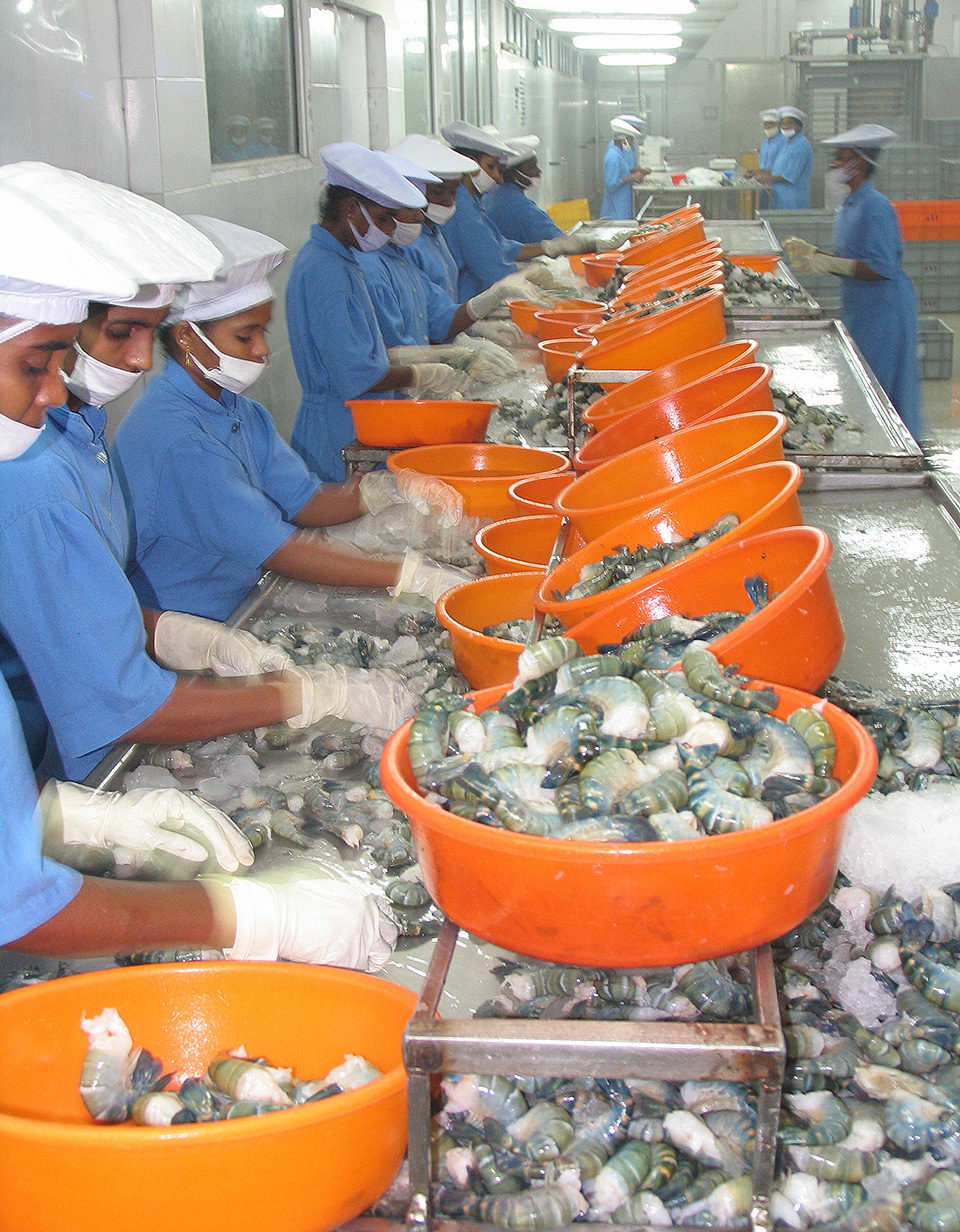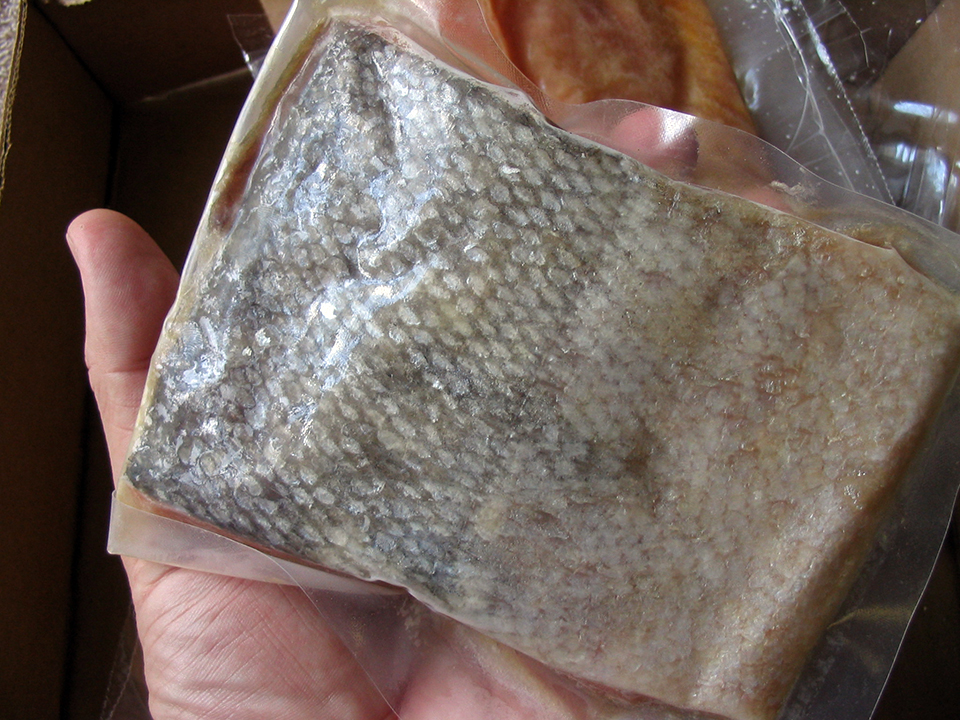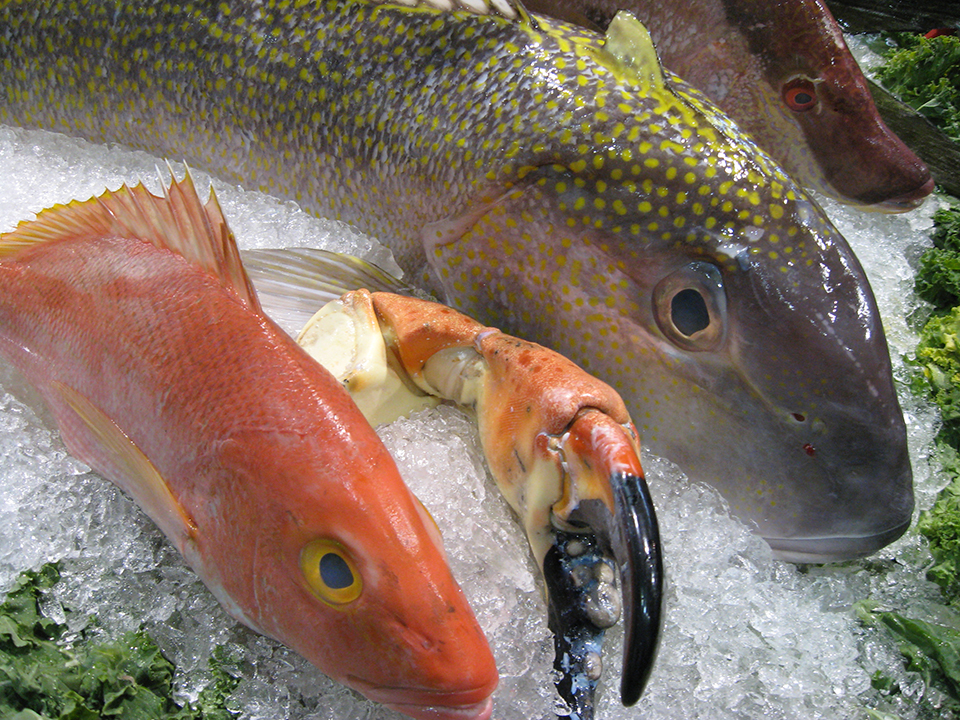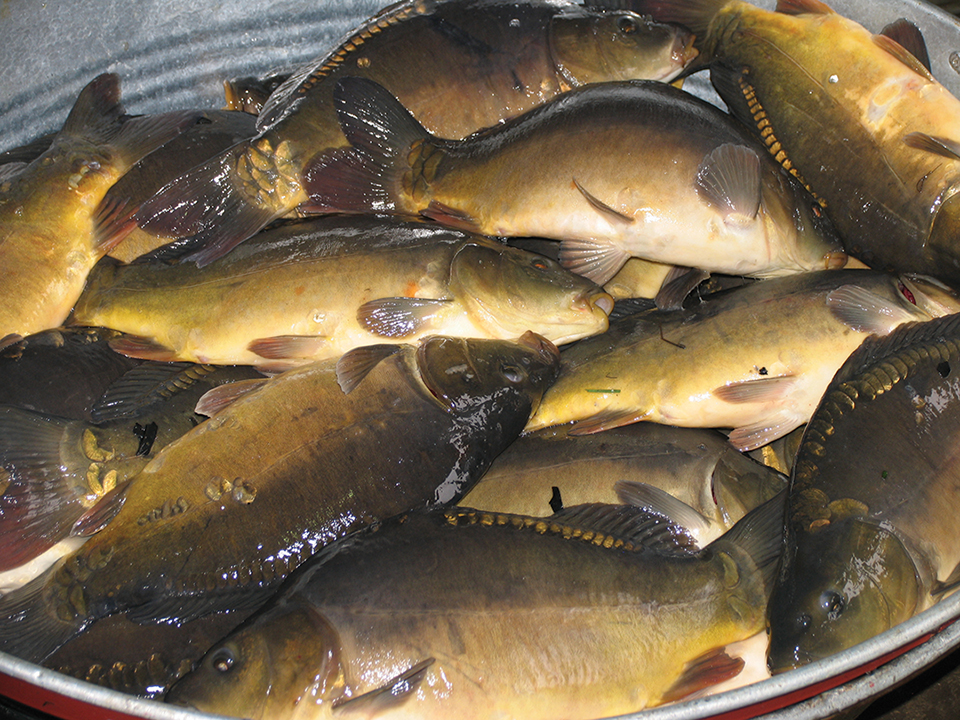New applications lead to new products

After harvest, a number of biological, environmental and processing factors can be controlled to produce a safe, high-quality product. Aquaculturists benefit from understanding the biochemical adaptability of fish and shellfish, and the relationship of enzyme chemistry to fish growth.
Biological, environmental factors
Feeding fish causes increases in their intestinal digestive enzymes, which are strongly temperature-dependent. These enzymes can cause post-harvest tissue degradation, an effect that is most pronounced when the connective tissue is affected. The practice of withholding feed prior to harvest not only saves money, but also results in a higher-quality product.
Fish require varying water temperatures depending on their species. Rainbow trout grow in cold water, while tilapia require warm water, for example. The temperature of the growing water is known to affect metabolic rate, enzyme structure and function, and muscle physiology.
The muscles of fish adapted to lower temperature contain a greater number of mitochrondria and other enzyme-rich bodies than the muscles of fish living in warmer waters. It is also known that the rates of adenosine triphosphate and glycogen degradation, and lactate accumulation are faster in the flesh of warm-acclimated fish than cold-acclimated fish.
Parasites
Many parasites in fish flesh are pathogenic to humans, such as Anisakis larvae. However, other parasites that are harmless to humans produce enzymes that make the product unsuitable for human consumption due to consumer rejection.
When present in fish flesh or on the skin and gills, these parasites secrete enzymes that destroy muscle tissue and result in milky pockets and jellification of muscle tissue. Some parasite-produced enzymes are capable of causing protein hydrolysis at rates that are 20 times higher than those observed in non-parasitized species.
Some aquaculture practices are more susceptible to parasite infection than others. For example, fish produced in net pens or under certain pond conditions may contain a greater number of parasites than fish produced in indoor recirculating aquaculture systems. It is noteworthy that some parasite-produced enzymes can be active at temperatures as low as minus-28 degrees-C. However, most are usually destroyed when stored at minus-30 degrees-C for several days.
Processing operations
Fish killed while struggling may enter rigor mortis up to three times faster than non-struggling fish. This results in the degradation of certain muscle compounds that can contribute to more rapid spoilage. This is particularly true when glycogen is depleted, and the biochemical process results in an accumulation of lactate as previously discussed.
Studies have shown that percussive stunning (a sharp blow to the head) preserved more glycogen than killing by immersion in carbon dioxide or other methods. However, no significant differences were found in the sensory and functional properties of rainbow trout slaughtered by different methods.
The use of transglutaminase for inducing covalent crosslinking of proteins is a common practice in the seafood industry. In fish processing, these preparations can improve the texture of surimi and fish sausage by inducing crosslinking of the myosin proteins. The enzyme has also been used to produce various sizes of sea scallops from smaller scallops.
The traditional applications of enzymes in the seafood industry have been limited to very few products (fish protein hydrolysate, fish sauce, cured herring). These compounds utilize the protease enzymes naturally present in fish muscle. New applications for fish and shellfish enzymes have emerged to accelerate seafood industry processes or produce other food products, including:
- Minced fish products
- Polyunsaturated, enriched fish oils
- Caviar and other roe production
- Cured fish products
- Fish and shellfish protein hydrolysates
- Seafood flavorings
- Fish sauces
- Fish silage
Proteases from clam viscera as a rennet substitute for cheese-making and production of other food products.
High-pressure processing
The author has published several articles on the applications of high-pressure processing (HPP) in the fish and shellfish industries. Recent studies have shown the effects of HPP processes on fish enzymes.
One study demonstrated improved firmness and elasticity of fish muscle due to inactivation of endogenous proteinase. Another showed that pressure-induced seafood gels retained better color and flavor, and were glossier, smoother and more elastic than heat-induced gels.
Other studies have also shown that the activities of three enzymes – cathepsin B-like, cathepsin B- L-like and calpains – were reduced in crude enzyme extracts at all pressure levels up to 300 MPa. It was observed that pressurization at lower levels seemed to induce proteolytic enzyme activity in fish muscle and decreased its activity at pressure levels above 300 MPa. The increased catheptic activity after HPP treatment appeared to be caused by the disruption of lysosomic membranes.
Minimize enzyme effects
Once fish are harvested, physical, chemical and enzymatic changes proceed, but the speed at which the degradation occurs depends on many factors. Endogenous and microflora enzymes will cause spoilage in fresh and frozen seafood. It can be helpful to identify which enzyme type makes the greatest contribution to the loss in quality.
The rate of spoilage can be delayed through the implementation of good manufacturing practices. The following steps can be used to minimize the degradative effects of enzymes in seafood products:
- Handle the catch as carefully as possible from harvest through distribution.
- Minimize stress during harvest, transport and slaughter operations.
- Withhold feed prior to harvesting to allow stomach emptying and reduce the concentration of stomach enzymes in the gut.
- Process fish under sanitary conditions and minimize exposure to elevated temperatures.
- Use approved additives or processing procedures to prevent lipid oxidation and enzymatic color changes.
- Freeze fish at temperatures at or below minus-30 degrees-C and maintain that temperature through the storage period.
- Limit the duration of frozen storage, preferably utilizing product in six months or less.
(Editor’s Note: This article was originally published in the September/October 2009 print edition of the Global Aquaculture Advocate.)
Now that you've reached the end of the article ...
… please consider supporting GSA’s mission to advance responsible seafood practices through education, advocacy and third-party assurances. The Advocate aims to document the evolution of responsible seafood practices and share the expansive knowledge of our vast network of contributors.
By becoming a Global Seafood Alliance member, you’re ensuring that all of the pre-competitive work we do through member benefits, resources and events can continue. Individual membership costs just $50 a year.
Not a GSA member? Join us.
Author
-

George J. Flick, Jr., Ph.D.
Food Science And Technology Department
Virginia Tech/Virginia Sea Grant (0418)
Blacksburg, Virginia 24061 USA[117,100,101,46,116,118,64,103,107,99,105,108,102]
Tagged With
Related Posts

Intelligence
Enzymes in seafood, part 2
The most important factors in the loss of quality in seafood are nucleotide catabolism and glycolysis. The rates and pathways of nucleotide degradation vary with species and muscle type.

Intelligence
Enzymes in seafood, part 1
Enzymes are responsible for postharvest changes in seafood that impact product characteristics and reduce value. The odor of seafood is a direct result of enzyme activity.

Health & Welfare
Cathepsin enzymes, part 1
Cathepsins B, D and L are considered critical in fish muscle post-mortem modifications or gel softening during the setting of surimi.

Health & Welfare
Cathepsin enzymes, part 2
Cathepsin D alone and in combination with other cathepsins presents the greatest proteolytic activity on some fish muscles.

